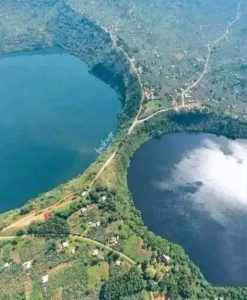Uganda Today: Why Parish Development Model Was Destined To Fail
By Muhimbise George
Two years ago, the government of Uganda introduced PDM as a program aimed at transforming 38 percent of our population from subsistence economy into the money economy. The President has insisted that this program is a magic bullet to ending poverty out of our country.
The intention of the program appears to have been good because without a significant portion of Ugandans into the money economy, all other development initiatives would be in vain. Our tax to GDP ratio has for years stagnated at 13 percent as compared to the recommended 18 percent, that means a few Ugandans pay actual taxes.

Constructing power dams, creating industrial parks and inviting investors to put up industries make less meaning when the population has less purchasing power to consume the goods being produced. A small middle class and a large citizenry under poverty is a huge burden to the government because these have to demand on it for basic services like health and education, yet their production is very low. This is exacerbated by a huge population of children/ dependants that stands at 52 percent.
So, how has a good idea (PDM) turned bad?
PDM has seven pillars on which it is hinged and they include; Agricultural (production, Storage, Processing and marketing); Infrastructure and Economic Services; Financial Inclusion; Social services; Mindset Change and community mobilisation; Parish Based Management Information System PBMIS; and Governance and administration.
Whereas these pillars were well thought out, they seem to have answered the why, the what and the who but didn’t answer the how! The implementation both at strategic and tactical levels seem to be lacking, and this explains the glaring failure of the program.
Take an example; mindset change is a very strong pillar. Most of the previous programs have failed due to a poor mindset both by implementers and beneficiaries. For example people taking government programs as political tokens, others conspiring to borrow government money and not using it productively but also having a population especially in the villages that is passive and traditional in thinking and planning.
Owing to the above, how has PDM tackled mindset change? How has PDM changed the mind of a man deep in Kasese who wakes up to the trading centre to take alcohol? How has it changed the mind of a youth in Nebbi who wakes up to the trading centre to do sports betting? How has PDM changed a mind of a traditional man in Kagadi who thinks that a girl child doesn’t deserve to go to school? How has it tackled the mind of a traditional man in Kamwenge who thinks he should grow ten types of crops on his two acre of land instead of having four Frisian cows on one acre and another acre of Matoke?
Has the program developed a mindset change strategy? Is there a uniform message designed for the masses? Are there specific people trained to deliver this message? Has there been a study conducted by psychologists on how someone’s mind can be changed and do we know what it takes to change someone mindset? Do we know the power of conditioning in psychology or what it takes to change ones attitude or perceptions? So if we haven’t done much in terms of real mindset change not political rhetorics, are we sure that PDM won’t fail just like the previous programs have failed?
The other pillar is infrastructure and economic services. How is this being implemented? The money has been sent to the parishes but is there an enabling environment to support the entire value chain to support the productivity of this money? Is there a clear road network linking the communities to the markets? Has electricity been connected to each parish?
The beautiful Secretary Bird found in Murchison National Park
The fast Ostrich found in Kidepo Valley National Park
The Crane also known as the Crested Crane, a National Bird in Uganda mainly found in swampy areas
Uganda is famous for bird watching and a habitat of 1090 bird species
+256 702 239 337 WhatsApp
Tel +256 772 500 640
*#VisitUganda*
*#Tulambule*
By December 2022 Uganda was producing 1345 Mega watts of electricity but our demand peak (the highest we could consume) stood at 794 MW. One of the challenges was that we produce power but we don’t transmit it to the consumers. A case in point Aswa 1 & 2 dam was producing 83 megawatts but only 8 MW was being evacuated. So if there is no deliberate effort to connect power to all parishes, how will the money being sent to the parish translate into production and ago-processing? If there is no good road network how will the produced goods access the market if at all it’s there?
In a nutshell, the designers of Parish Development Model seem to have been over ambitious and ended up becoming ambiguous. Just like the previous programs, the people on ground think the President or government has served them a buffet (Museveni agabudde) and they will share this money just like they have always done and this will mark the death of the program. It is no wonder that the well intentioned programme is already bedeviled by corruption scandals in several districts.
Muhimbise George, muhimbiseg@gmail.com, +256 787 836 515 member Alliance for National Transformation
